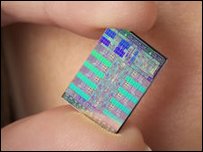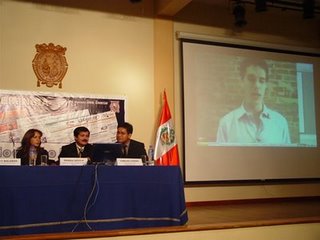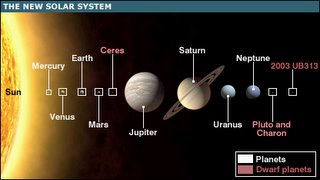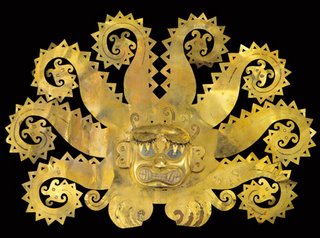Blood convalescent components to combat viral pandemics.
 Photo. Spanish flu, patients. Kansas. BBC courtesy.
Photo. Spanish flu, patients. Kansas. BBC courtesy.In this investigation, the authors analyzed critically studies carried out among 1918-1925, that although with certain limitations (absence of databases, small number, not controlled scientifically study, not standardized dose of serum, absent methodology : double blind/random/placebos, biases: alone they selected sure and coherent studies, etc), it contributes results to keep in mind. At the end, 1703 patients from 8 great studies were selected. All they suffered of Spanish flu complicated with pneumonia and were treated with serums of convalescent of Spanish flu. In spite of all the limitations the results stir up the attention for 2 reasons: - I -) the differences of absolute risk of mortality - in patients with Spanish influenza - complicated with pneumonia, treated early (less than 4 days), with serotherapy, were statistically significant: 26%, (p=less than: 0.001) in relation to 50%, of the controls without treatment, being concluded that serotherapy (passive viral antibodies that possibly diminish the viral replication and toxic effects of cytokines in the lung), diminished the risk of death significantly, in having affected by Spanish flu complicated with pneumonia. Impact the recommendations of the group of investigators to pay the eventuality of a viral pandemic : a) administer inmediately : plasm or serum to: 1-2 ml/ kg/weight b) it is better administer plasm or serum from at least 3 different donors c) perform massive serotherapy at a national or world level - II -) The apparently successful treatment of the past spanish flu will affect and influence similar viral affections of present of times: HIV and others. Because all these affections -to the long or the short one will be successfully treated with immunologic approaches, especially with improved vaccines (variable and adaptatives to antigenic variations). Now that OMS, prepares to begin a program of vaccinations at world level against certain viral illnesses, we simply say that we were, we are and we will agree.
Con la tranquila humildad de quien presenta algo, a sabiendas de su eficacia : T.C., Luke, E.M.. Kibane, J.L. Jackson et al, han puesto a consideracion de la critica mundial su metaanalisis : ..."Componentes sanguineos de convalecientes de la gripe española : ¿Futuro tratamiento de epidemias de H5N1?".... La importancia de este trabajo radica en la posibilidad de que el virus H5N1 aviario, sufra una mutacion, sea luego trasmitida a los humanos y origine una pandemia de magnitud similar a la generada por el virus de la influenza española (1918-1919), el mismo que tras diseminarse por 2/3 del planeta, mato 100 millones de personas. Aunque la epidemia por el virus H5N1 aviar actual, ya ha matado cientos de aves, no es menos cierto tambien que ya ha infectado a unos 236 humanos (en África y Asia), estando asociada a una escalofriante letalidad, que ronda el 50 %. De ocurrir una mutacion ahora, habrian muchos problemas, porque las vacunas tardan 5 meses en prepararse, hay reportes de resistencia a los mejores antivirales disponibles, dificultades para identificar aves contaminadas y a la signosintomatologia caracteristica humana, que ahora en vez de focalizarse en los pulmones, afecta a todo el soma. Si ocurriese una mutacion ahora y el virus se diseminase entre humanos, la catastrofe seria de proporciones. Por eso, en una pandemia importa disponer de un arsenal terapéutico amplio, siendo valioso que alguna de las armas disponibles, promuevan efectos rapidos, masivos y efectivos.
En esta investigacion, los autores analizaron criticamente estudios llevados a cabo entre 1918-1925, que aunque con ciertas limitaciones (ausencia de bases de datos, numero pequeño, estudio no controlado cientificamente, dosis de suero no estandarizada, ausencia de metodologia : doble ciego/azar/placebos, sesgos : solo seleccionaron estudios seguros y coherentes,etc), aporta resultados a tener en cuenta. Al final se estudiaron 8 estudios y 1703 pacientes afectados de influenza española complicada con neumonia, que fueron tratados con sueros de convalecientes de gripe española. Pese a todas las atingencias señaladas anteriormente, los resultados concitan la atencion por 2 razones :-I-) las diferencias de riesgo absoluto de mortalidad -en pacientes con influenza española- complicada con neumonia, tratados tempranamente (menos de 4 dias), con seroterapia, son estadisticamente significativas : 26 % (p=menos de : 0.001), en relacion al 50 %, de riesgo de mortalidad, de controles sin tratamiento, concluyendose que la seroterapia (anticuerpos pasivos virales, que posiblemente disminuyen la replicacion viral y los efectos toxicos de las citoquinas en el pulmon), disminuye significativamente el riesgo de muerte, en afectados por influenza española complicada con neumonia. Impactan las recomendaciones del grupo de investigadores ante la posibilidad de una pandemia viral: a) administrar de inmediato, suero o plasma a razon de 1-2 ml/kg/peso b) preferir 3 donadores diferentes de plasma o, suero c) masivizar el empleo de la seroterapia a nivel nacional o mundial - II -) El tratamiento aparentemente exitoso de esta pandemia con seroterapia, influira definitivamente en el tratamiento de algunas epidemias actuales (HIV y otros) y pandemias virales del futuro. Personalmente opinamos que todas estas afecciones, a la larga o a la corta, seran tratadas exitosamente con aproximaciones inmunologicas, en especial con vacunas mejoradas o de nuevo cuño (variables y adaptativas a las variaciones antigenicas). Ahora que la OMS, se apresta a iniciar un programa de vacunaciones a nivel mundial contra cierto sector de enfermedades virales, nosotros simplemente decimos que estuvimos, estamos y estaremos de acuerdo.
Tags: /spanish flu/H5N1 virus/serotherapy/viral mutation/.











.+Photo+Author.jpg)


